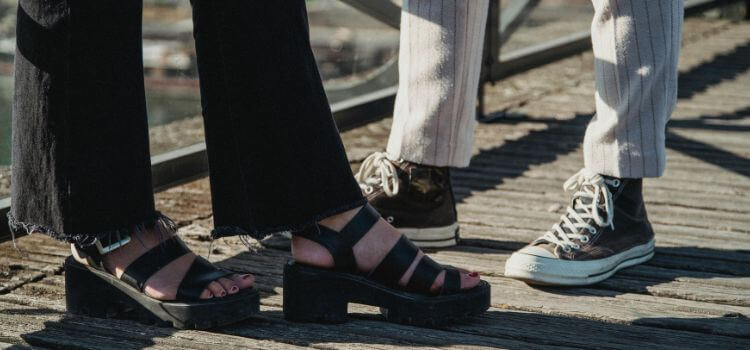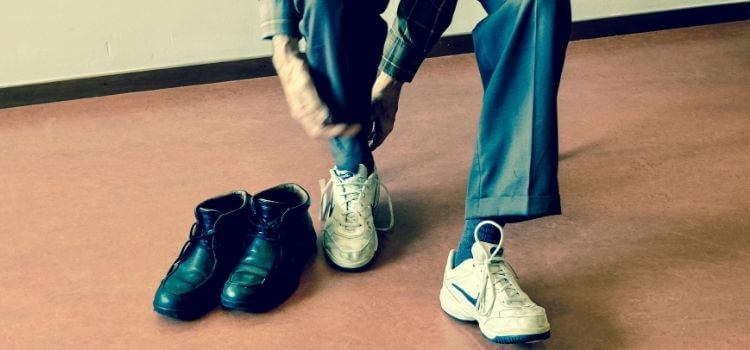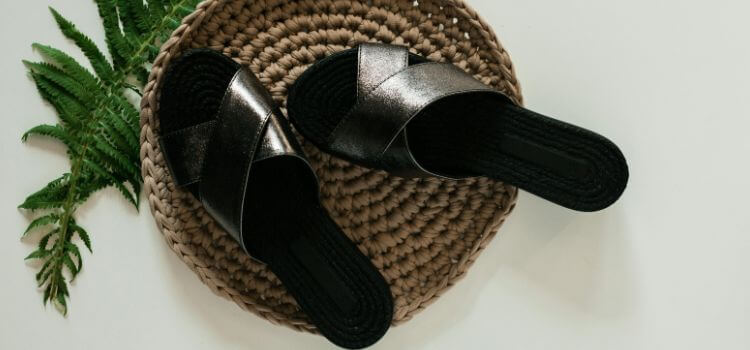As an Amazon Associate, I earn from qualifying purchases
Living with venous insufficiency can be challenging, especially when it comes to finding the right footwear. Venous insufficiency, a condition where the veins have trouble sending blood from the legs back to the heart, can lead to swelling, discomfort, and even ulcers in severe cases. In this article, we’ll explore the importance of choosing the right shoes for managing venous insufficiency and provide valuable tips on finding the perfect pair.
What is Venous Insufficiency?

Venous insufficiency occurs when the valves in the veins of the legs fail to function properly, causing blood to pool in the lower limbs rather than flow back to the heart. This can be due to a variety of factors, including genetics, age, obesity, or prolonged standing or sitting.
Symptoms of venous insufficiency may include swelling, aching or heavy legs, cramping, itching, and in severe cases, the development of ulcers, particularly around the ankles.
The Impact of Venous Insufficiency on Foot Health
Venous insufficiency not only affects the circulation of blood but also has a significant impact on foot health. The pooling of blood in the lower limbs can lead to swelling, which can cause discomfort and make it difficult to find shoes that fit properly. Furthermore, the increased pressure on the veins can result in the development of varicose veins and, in severe cases, venous ulcers.
Why Choosing the Right Shoes Matters
Proper footwear plays a crucial role in managing venous insufficiency. The right shoes can provide support and stability, alleviate discomfort, and promote better circulation in the feet and legs.
Features to Look for in Shoes for Venous Insufficiency

When shopping for shoes to wear with venous insufficiency, there are several key features to look for:
- Arch Support: Shoes with adequate arch support can help reduce strain on the feet and promote proper alignment.
- Cushioning: Ample cushioning in the sole can provide shock absorption and enhance comfort, particularly for those with sensitive or swollen feet.
- Wide Toe Box: A wide toe box allows for ample room for toes to spread out, reducing pressure on the forefoot and minimizing the risk of developing bunions or corns.
- Adjustable Straps: Shoes with adjustable straps or closures allow for a customized fit, accommodating fluctuations in swelling throughout the day.
- Breathability: Opt for shoes made from breathable materials to help prevent excessive sweating and minimize the risk of skin irritation.
Types of Shoes Recommended for Venous Insufficiency
Several types of shoes are recommended for individuals with venous insufficiency:
- Orthopedic Shoes: These are specifically designed to provide support and comfort for individuals with foot and ankle conditions, including venous insufficiency.
- Compression Stockings: While not shoes per se, compression stockings are often recommended alongside supportive footwear to help improve circulation and reduce swelling in the legs.
- Diabetic Shoes: Diabetic shoes are designed with extra depth and width to accommodate foot deformities and reduce pressure points, making them ideal for individuals with venous insufficiency.
Tips for Finding the Perfect Pair

Finding the perfect pair of shoes for venous insufficiency can be challenging, but these tips can help:
- Proper Fit: Ensure that your shoes fit comfortably and provide ample room for toes to move freely.
- Consulting a Specialist: Consider consulting a podiatrist or orthopedic specialist who can recommend shoes tailored to your specific needs.
- Trying Different Styles: Don’t be afraid to try different styles and brands to find the perfect fit for your feet.
Conclusion
Choosing the right shoes is essential for managing venous insufficiency and maintaining optimal foot health. By selecting footwear with proper support, cushioning, and adjustability, individuals with venous insufficiency can minimize discomfort, reduce swelling, and promote better circulation in the feet and legs.
FAQs About Shoes for Venous Insufficiency
Suitable shoes for venous insufficiency should provide adequate support, cushioning, and adjustability to accommodate swelling.
It’s generally best to avoid wearing heels, as they can exacerbate symptoms of venous insufficiency by putting additional pressure on the veins.
Several brands specialize in orthopedic footwear, such as Dr. Comfort, Orthofeet, and Propét, which offer shoes designed to accommodate various foot conditions, including venous insufficiency.
It’s recommended to wear compression stockings or socks specifically designed for individuals with venous insufficiency to help improve circulation and reduce swelling.
While not always necessary, wearing compression stockings alongside specialized shoes can provide additional support and help improve circulation, particularly for individuals with severe venous insufficiency.
As an Amazon Associate, I earn from qualifying purchases

Leave a Reply